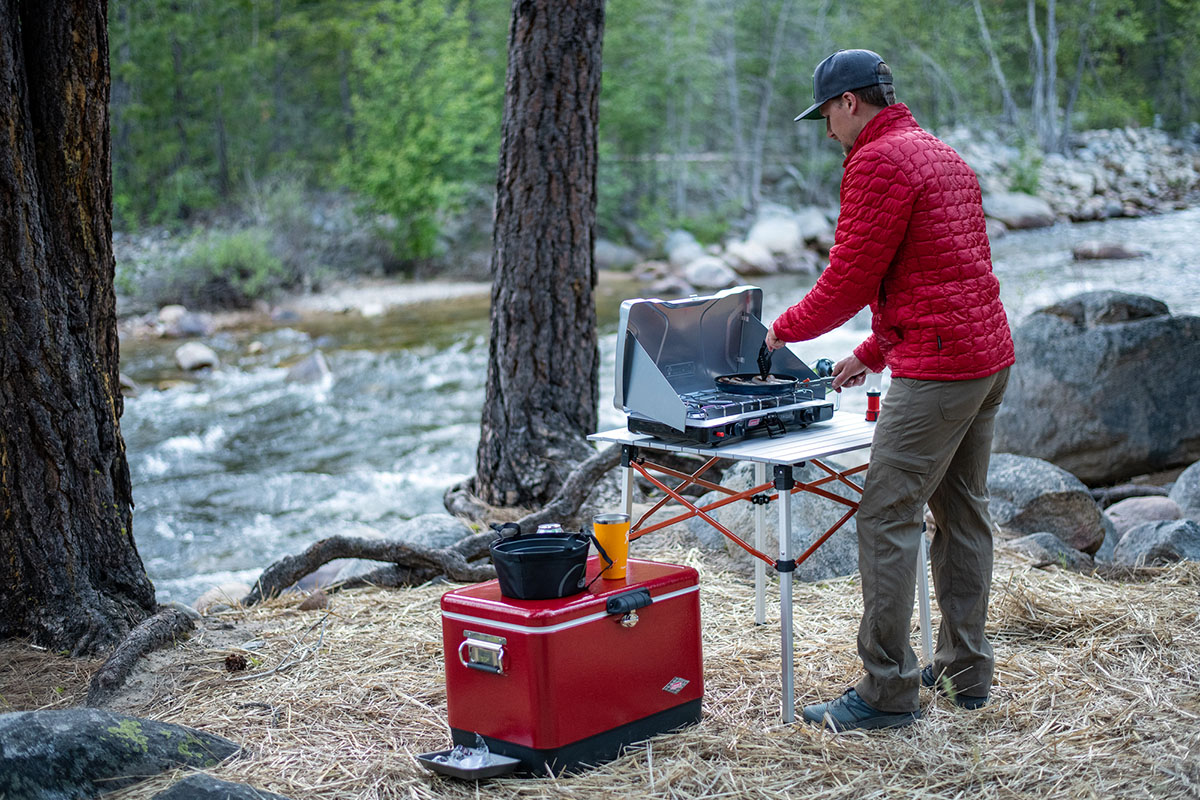
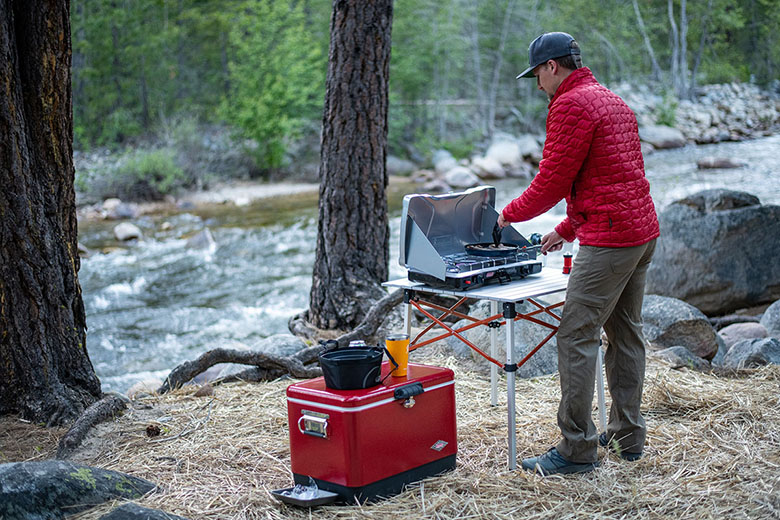
Switchback Travel (Jason Hummel)
There are quite a few factors to consider when choosing which camping stove is right for you. How many people are you cooking for? Do you like to make intricate meals? How far will you have to shuttle your gear from the car to the campground? To help you decide, below we break down the main considerations that go into picking the best camping stove, including the differences between freestanding and tabletop models, choosing the right number of BTUs, outlining the various fuel types, and more. For a look at our top picks, see our article on the best camping stoves. And if you prefer venturing farther into the backcountry, we've also put together a round-up of the best backpacking stoves.
Editor’s note: We updated this article on September 16, 2024, to add a section on sustainability and ensure all product recommendations were current at the time of publishing.
The first order of business is nailing down the right stove style for your culinary needs. There are two main types: freestanding models with legs and more portable tabletop designs. Freestanding stoves are larger, heavier, and generally have more BTUs (more on this below) than tabletop units, making them well suited for large groups or those who need a lot of power and cooking space. Another benefit to freestanding models is that they can be set up just about anywhere—no need to hunt for a flat surface at camp or take up valuable food-prep space with your stove.
Tabletop designs, on the other hand, function just as their name implies: Prop them up on a picnic table or bench, and you’re ready to start cooking. Given the lack of legs, tabletop stoves are much smaller, more compact, and more portable than freestanding models. With these units, you’ll need to make sure you have a sturdy surface for cooking—if not, consider bringing along a separate camping table. The differences in performance can be quite minimal between high-end tabletop designs and larger freestanding stoves, but you can generally expect tabletop models to have fewer burners, lower output (fewer BTUs), and less cooking space.
.jpg)
Next up is choosing how many burners you need. Two burners are the standard among both freestanding and tabletop camping stoves, and for good reason. After all, how often do you need to use more than two burners at once when cooking at home? Popular models like the Coleman Triton and Camp Chef Everest 2X excel at everything from weekend trips for couples to week-long campouts with a family of six. In most instances, a two-burner stove can be your Swiss Army Knife solution.
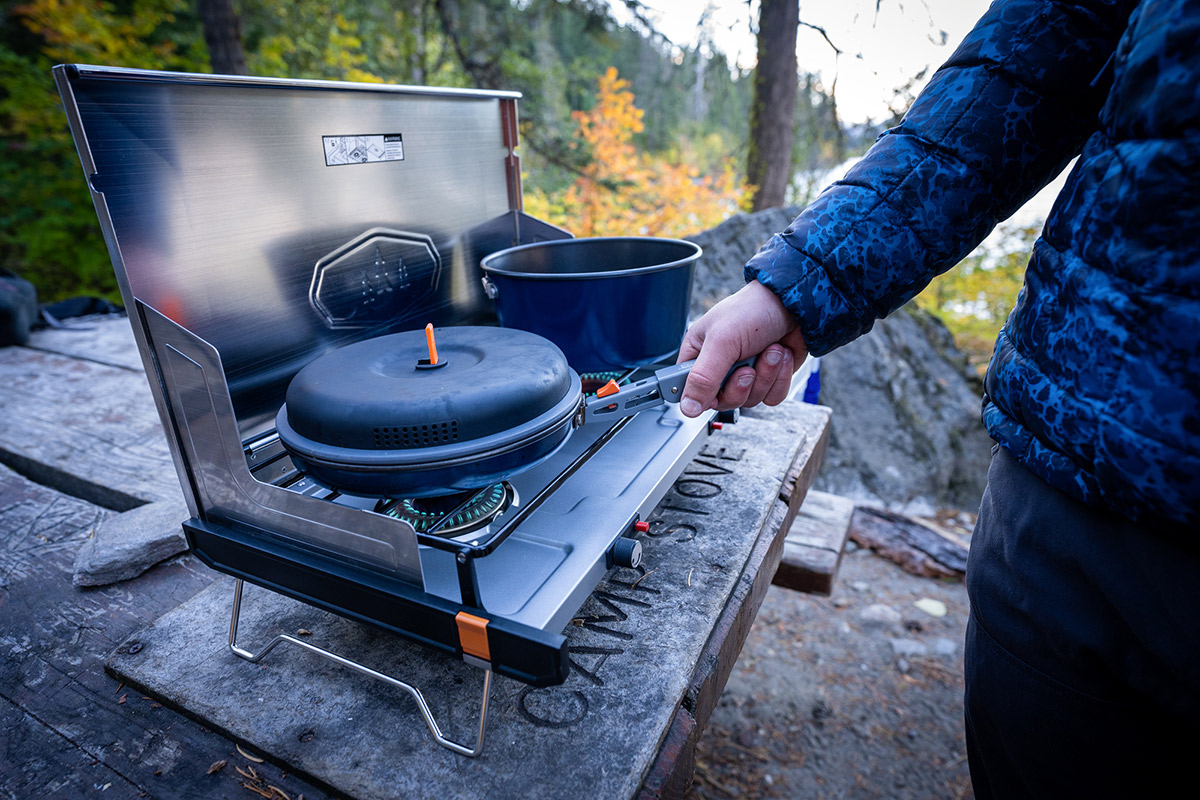
That being said, a case can be made for selecting a one-burner stove. Single-burner designs like the Coleman Classic 1-Burner and MSR WindBurner Combo System work well for one-pot or dehydrated meals on quick trips with one to three people. In addition, they take up less space and bulk and are significantly lighter than the two-burner competition. Of course, cooking space is very limited, and you won’t be whipping up five-course meals, but one-burner stoves are generally very portable, and some options, like the MSR WindBurner kit, can cross over decently well for backpacking.
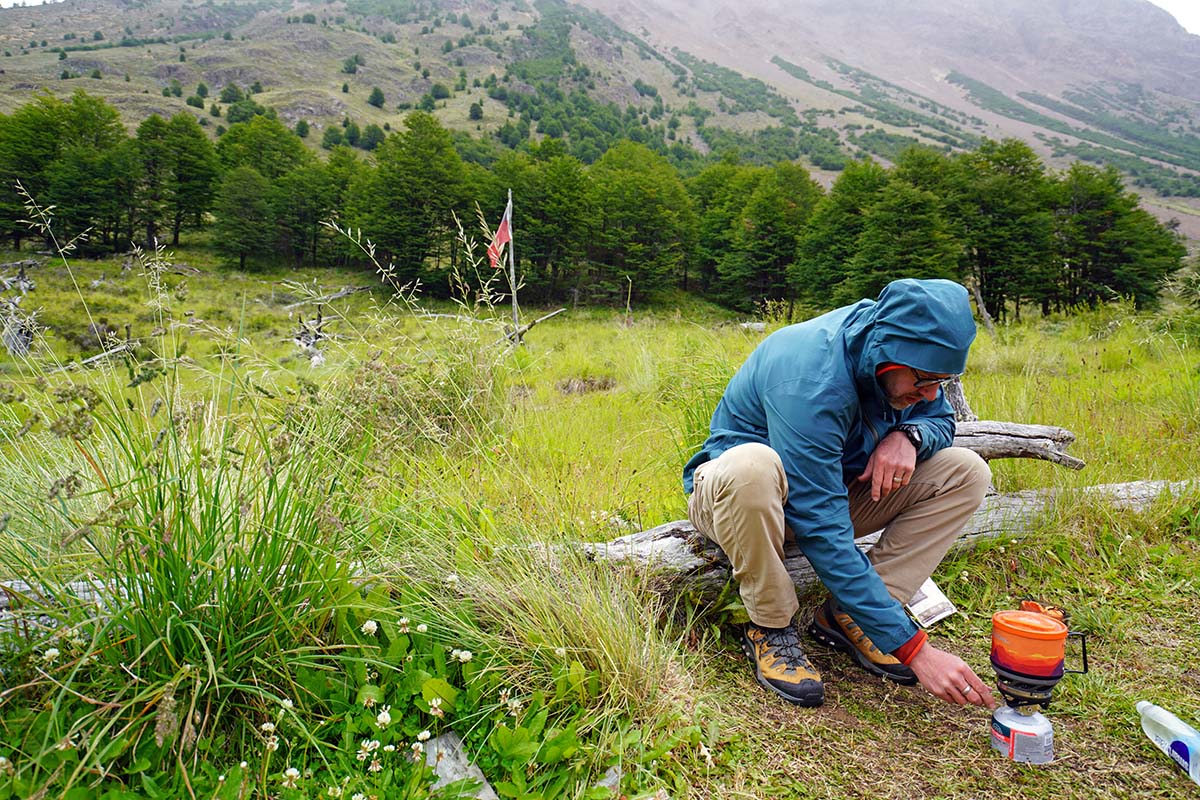
If you're planning to take the camp chef role seriously and anticipate consistently cooking for large groups of six to seven people or more, it’s worth looking into three-burner stoves like Camp Chef’s Tahoe or Expedition 16. Their large footprints and powerful burners put them almost in a class of their own. Alternatively, you can choose a stove system that can be linked together to increase cooking space. For instance, models like the Jetboil Genesis Basecamp System can be daisy-chained to other Jetboil stoves and connected to a single propane bottle. For those who are concerned about packed size and portability—and are willing to pay for the privilege—these add-on setups can make a lot of sense. In the end, the number of burners you need comes down to a combination of personal preference, how intricate your meals are, and how many campers you need to feed.
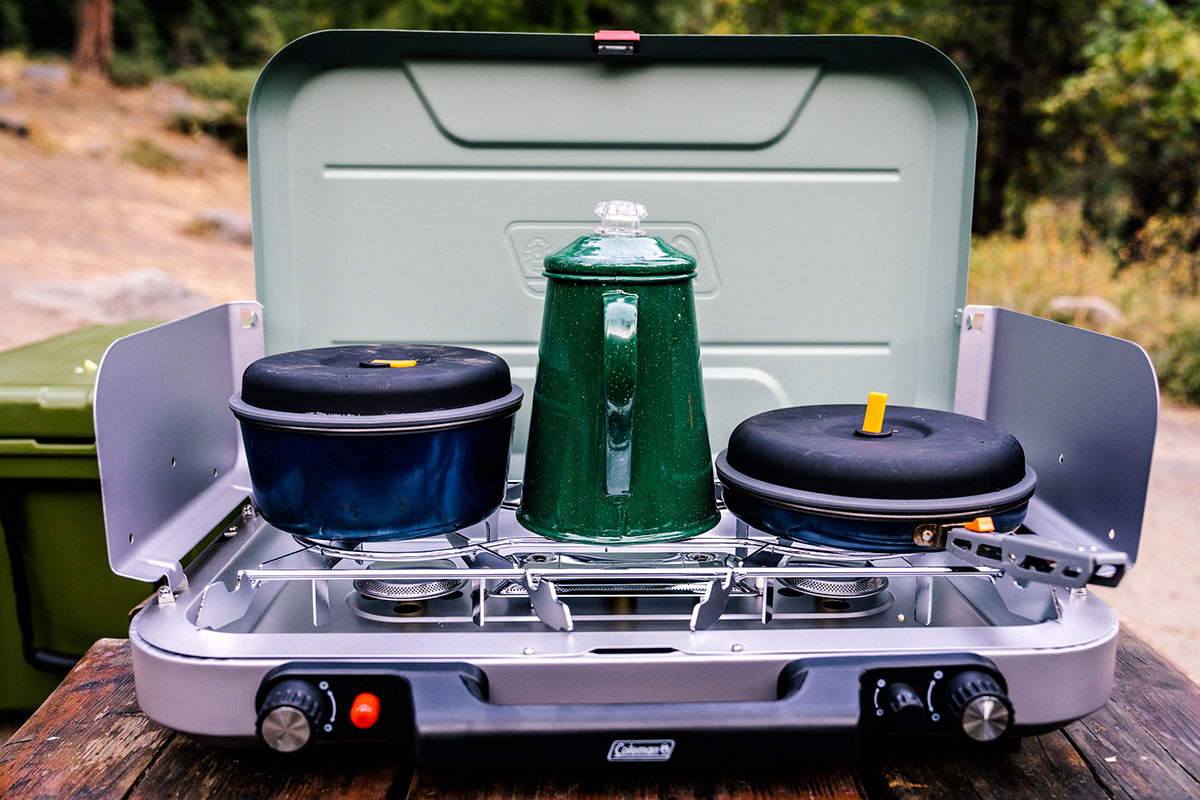
A final and often overlooked consideration when discussing burners is space. A generous cooking footprint will allow you to place two large-diameter items side-by-side—such as a 12-inch cast iron skillet and cookpot for spaghetti. Compact models can still squeeze in two 10-inch pans, but you can run out of real estate cooking a large meal. Before buying, we recommend looking closely at each stove’s specifications to ensure you have enough room for your cookware.
In a camping stove search, BTUs will be front and center as one of the more heavily advertised specifications. But what does this actually mean? Short for British Thermal Unit, BTUs measure the amount of energy needed to heat 1 pound of water by 1 degree Fahrenheit. As such, this number is essential for understanding how much power a given stove can produce. In other words, all else being equal, a burner with more BTUs will be able to pump out more heat than a burner with fewer. There are other factors that can impact a stove's performance potential—including overall design, burner size, wind resistance, etc.—but you can think of BTUs as an accurate indicator of power and a good point of comparison between different models.
How many BTUs you need depends on what you’ll be cooking and for how many (Camp Chef published a helpful article on the topic here). In short, a boost in power will allow you to cook more food faster, which is great for large groups or those making involved meals with multiple courses or parts. For these uses, we recommend a BTU output of at least 20,000 per burner. Smaller groups of less than four or those who don’t need the added power can get away with 10,000 BTUs per burner or less, although the time required to boil water or cook will likely increase. All that said, extra output (more BTUs) also means you’ll burn through fuel faster, which will require planning ahead and bringing along an extra canister or two in case you run out.
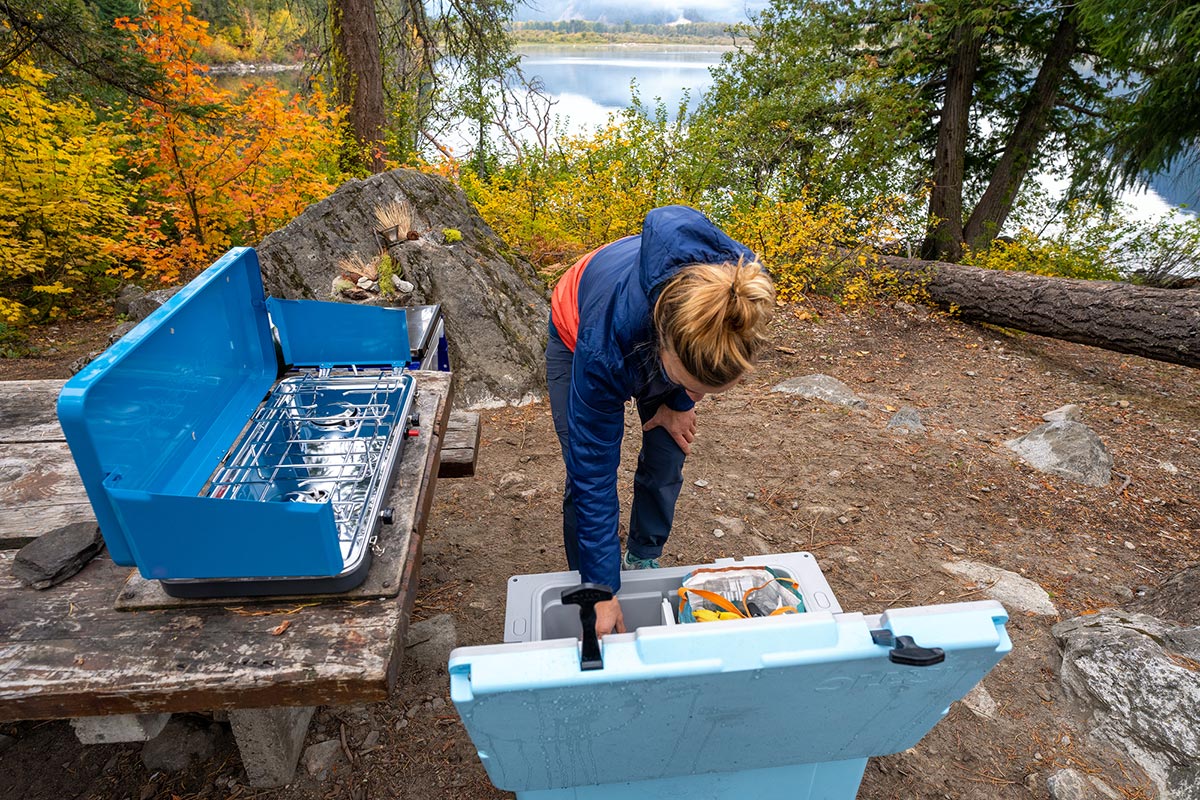
The vast majority of camping stoves run on propane: It performs well in a range of temperatures, lights instantly, and those ubiquitous little green bottles are readily available at just about any outdoors or big-box retail store, as well as many gas stations near campgrounds. For most weekend outings, one 16-ounce bottle should suffice, but we highly recommend bringing along a backup or two in case you run out of fuel. For even more convenience without having to restock as often, the classic 5-gallon tank (also referred to as a 20-pound tank) is a tried-and-true choice. They’re fairly easy to secure in the back of a pickup bed, more cost-effective than small bottles in the long run, refillable in just about every town, and will last you many meals. To accommodate these, you’ll likely need to purchase an adapter and hose (like this one) that connect to your stove, but they’re relatively cheap and a good investment if you do a lot of camping.
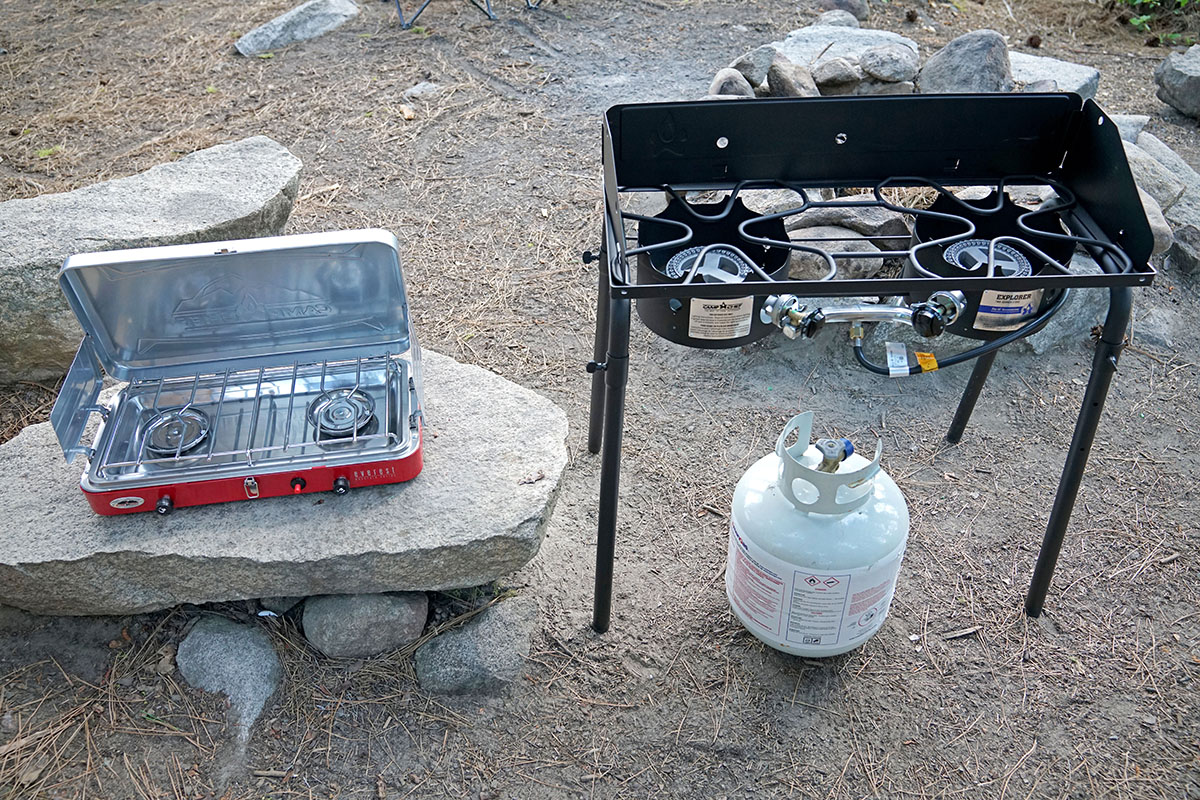
All that said, propane does start to suffer in temperatures below freezing. Butane does even worse and isn’t as readily available as propane, but the canisters are lighter and more compact (this is more of a consideration for backpackers). That said, if you plan to camp in winter or in the high mountains, a liquid-fuel stove is the best option. Liquid fuel can come in the form of unleaded gasoline that you can find at any gas station, clean white gas from camping stores, kerosene, jet fuel, or even diesel. White gas is one of the best choices for camping in extreme conditions, but there aren’t a whole lot of options in a full-size camping stove style (one exception is a multi-fuel stove like the Coleman Dual Fuel, which runs on either white gas or unleaded gasoline). Further, liquid-fuel stoves tend to cost more than propane systems and don’t offer any performance benefits in mild conditions. But if you exclusively camp in the winter, a liquid-fuel stove will be much more reliable than one that runs on propane.
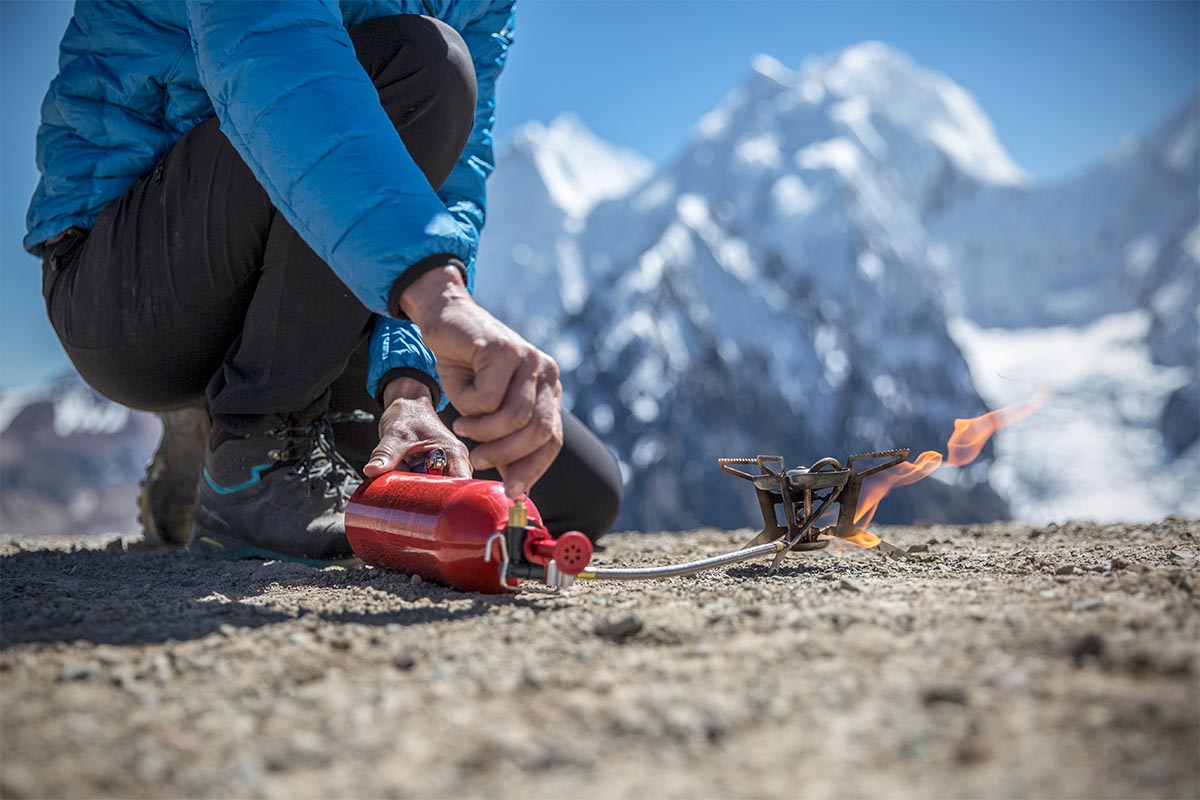
A final type of fuel is one you might already have at camp: wood. Wood-burning stoves have gained popularity in recent years due to their convenience—simply collect twigs and sticks at camp, and you’re ready to start cooking. However, these systems have more limited flame and heat control compared to other models, are restricted during fire bans, and rely on a resource that might not be readily available depending on the terrain and weather. All in all, we recommend propane for the vast majority of campers—it’s the most foolproof and reliable option by far—but liquid-fuel and wood alternatives can be viable depending on factors like the temperature and campsite location.
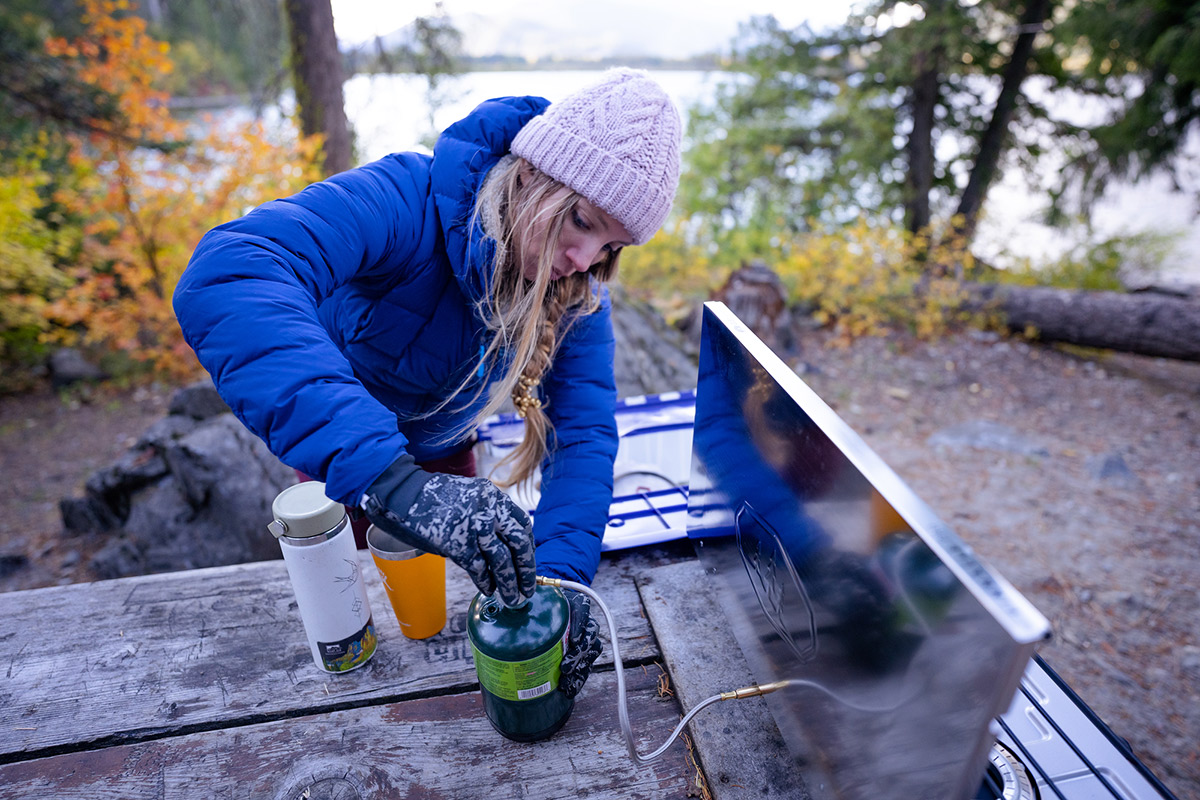
Regardless of where you’re camping, wind can be a major meal-killer. If your stove isn’t protected on even a moderately gusty day, it’ll be difficult to get consistent power to cook your food evenly and efficiently (and strong gusts can put the flame out completely). To help, look for stoves that come equipped with windshields along three sides to protect the burner. That said, if your ideal stove doesn’t come with built-in protection, it’s easy to improvise a makeshift barrier, or you can purchase one separately. To be sure, windscreens aren’t a cure-all—strong gusts can often whip around unpredictably in every direction—but combined with a decent camp set up in a protected area, you should be able to get a relatively stable flame.
Another important feature to consider is simmering ability. Boiling water quickly at high heat is important, but most meals aren’t cooked that way. For foods that require a little more finesse (think sauces and soups), you’ll want to make sure your stove has effective simmer control or the ability to provide even heat and precise flame control at a low setting. Good simmer performance isn’t something found on a spec sheet, but high-end models will typically perform better in these conditions. For example, the Camp Chef Everest 2X ($190) has excellent simmer control, while budget stoves like the Coleman Triton ($90 full price but often sold for less) tend to struggle a bit. Having a good windscreen will also help keep the flame lit if you’re running the heat on low. The main takeaway: If you’re willing to spend up, your camp stove can perform almost as well as your cooktop at home.
.jpg)
As you narrow your search, you can start getting into some of the nitty-gritty features like optional push-button ignition (you’ll also see them referred to as piezo igniters). The majority of entry-level models have manual ignition, which requires you to turn on the gas and get close enough to the burner with a match or lighter for the flame to catch. Piezo igniters, on the other hand, use pressure-based ignition, allowing you to light your stove with the push of a button (or twist of a knob) and keep your hands out of harm’s way. It all sounds great on paper, but piezo igniters do come at an extra cost (usually about $20) and can fail over time (we always bring along a backup set of matches or a lighter). If you’re weighing both options, think through whether or not you’re willing to spend up for the added convenience.
.jpg)
When car camping or even basecamping, weight and bulk matter a lot less than when you’re hauling gear miles into the backcountry. That said, you should look for a unit that will be manageable to cart to and from camp and that also suits your cooking preferences. For example, the Camp Chef Everest 2X weighs a reasonable 12 pounds and folds down easily but still performs on par with many larger and heavier freestanding units. The freestanding Camp Chef Explorer, on the other hand, features impressive cooking power with two 30,000-BTU burners and is great for large groups, but the unit weighs a whopping 31 pounds and is a pain to lug around (having a truck helps). And at the ultra-low-profile end of the spectrum is GSI’s Pinnacle Pro, which weighs 11 pounds and packs down to 1.4 inches tall when folded (for reference, the Everest is 4 in.). A final decision will come down to where you’ll be camping and preferences on performance and space.
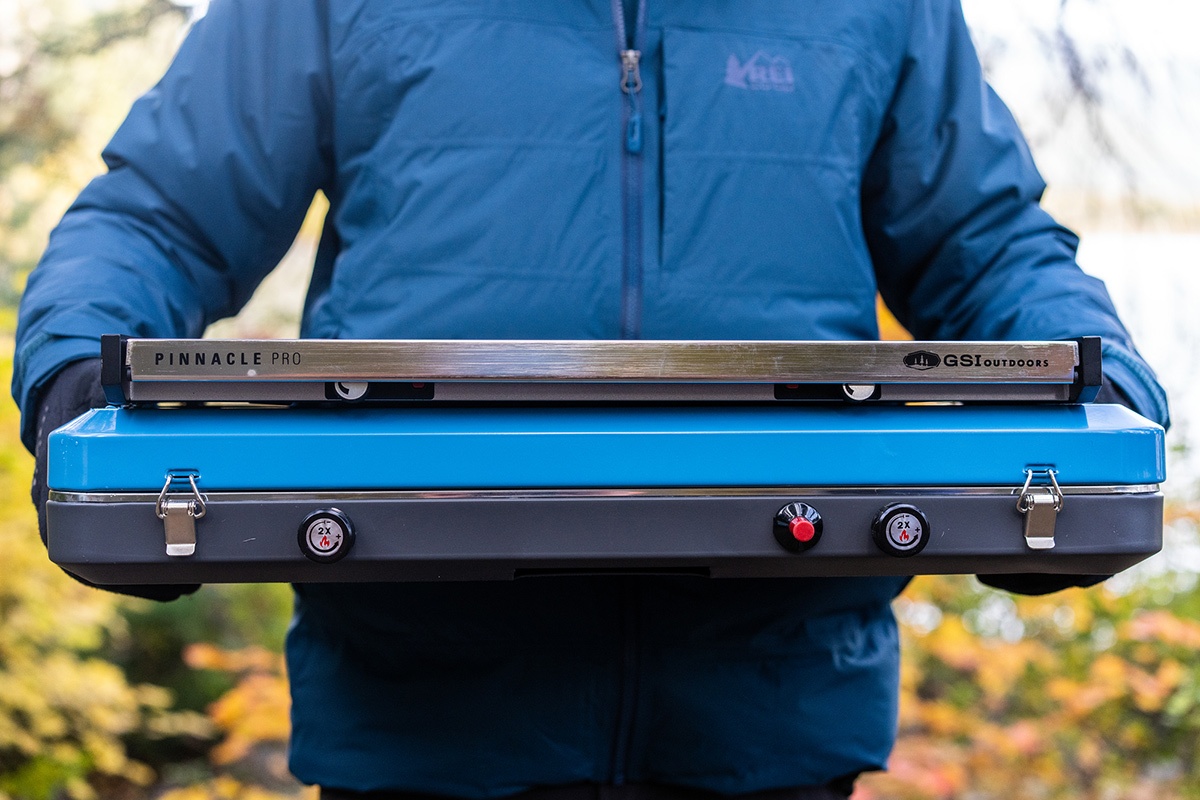
By and large, most campers will go with a traditional camping stove cook surface: two burners with a grate overtop. However, for those who want to cook meals like bacon and eggs, pizza, or barbecued meat, there are a healthy number of specialty cooktops on the market. Hybrids like the Coleman Cascade 3-in-1 are relatively versatile—in this case, you get two burners and a cast iron grill and griddle all in one. Alternatively, models like the Camp Chef Explorer allow you to swap out or add on accessories like a barbeque box, pizza oven, or griddle. In the end, just like when cooking at home, regular burners are the norm for most campers and can handle the vast majority of meals. Our preference is to use a separate griddle plate so that we still have access to two burners when needed, but the ability to switch cooking surfaces is undoubtedly a nice perk.
We'd be remiss not to mention the environmental impact of fuel canisters. While those classic green bottles are highly convenient, many people don't know how to properly dispose of them, so they end up in landfills or scattered in the wild. This isn't ideal because they are a fire hazard, as some amount of propane remains inside even when "empty". To recycle these canisters safely, you'll need to take them to a solid waste authority in your area.
Another option is to invest in a refillable system such as this one from Flame King, though this works best only if you buy their branded canisters along with the kit. If you don't want to deal with refilling your own 1-pound bottles and have enough space, you can also purchase a hose and adapter, which will allow you to use a large 20-pound propane tank. You'll pay less for your propane over the long haul with one of these options, but if they aren't a good fit, be sure to dispose of those 1-pound bottles responsibly. A final consideration if you prefer to avoid disposable canisters is to consider a liquid fuel model like the Coleman Dual Fuel. These can be a little messier to use, but the benefit is that you won't be constricted to just one fuel type.
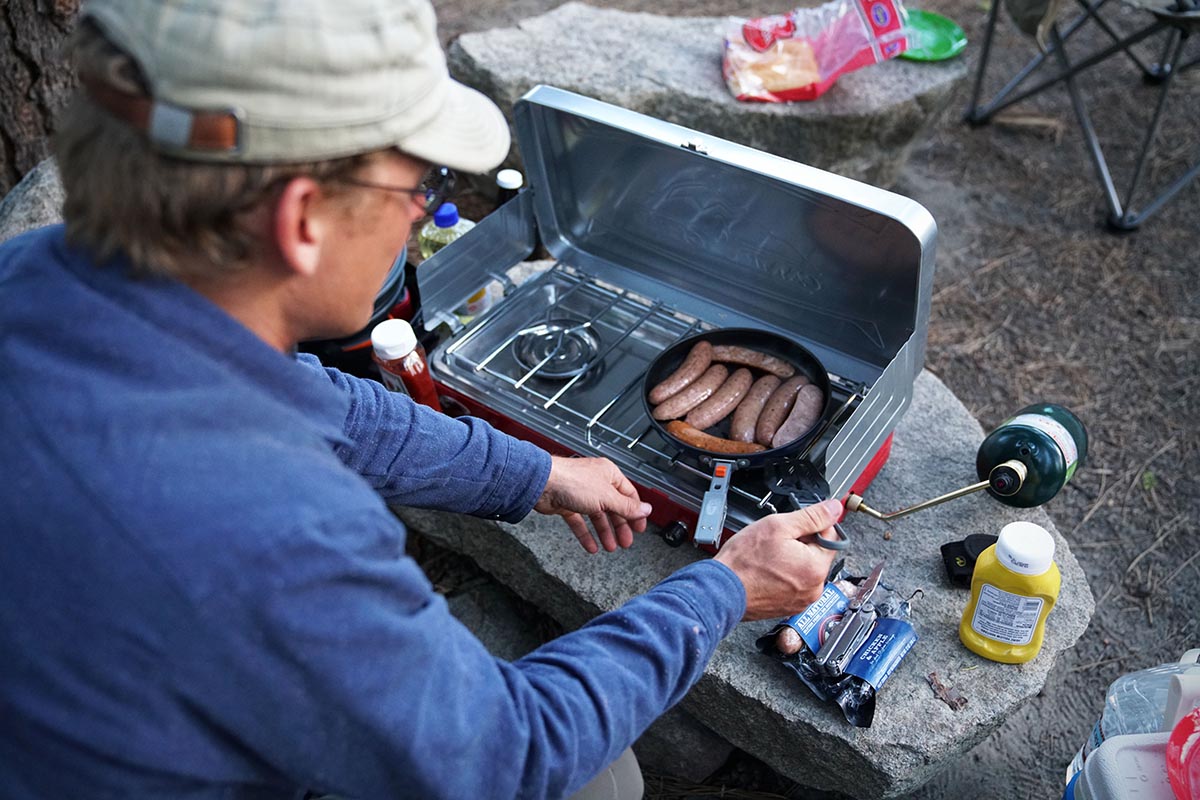
If you already own a backpacking stove or are thinking about picking one up to use for both camping and backcountry trips, there are some important points to consider. Compared to camping-specific models, backpacking stoves are less stable, much smaller with only a single burner, don’t simmer as well, and are designed primarily for boiling water (often in a small pot or pan, but nothing more). Camping stoves, as we touched on above, are heavier, larger, more hardwearing, and often awkward to carry but are similar to your cooktop at home and allow you to make more intricate meals. To be sure, backpacking stoves are serviceable for quick car camping trips with one to two people, but they don’t offer the same versatility and severely limit the types of foods you can cook.
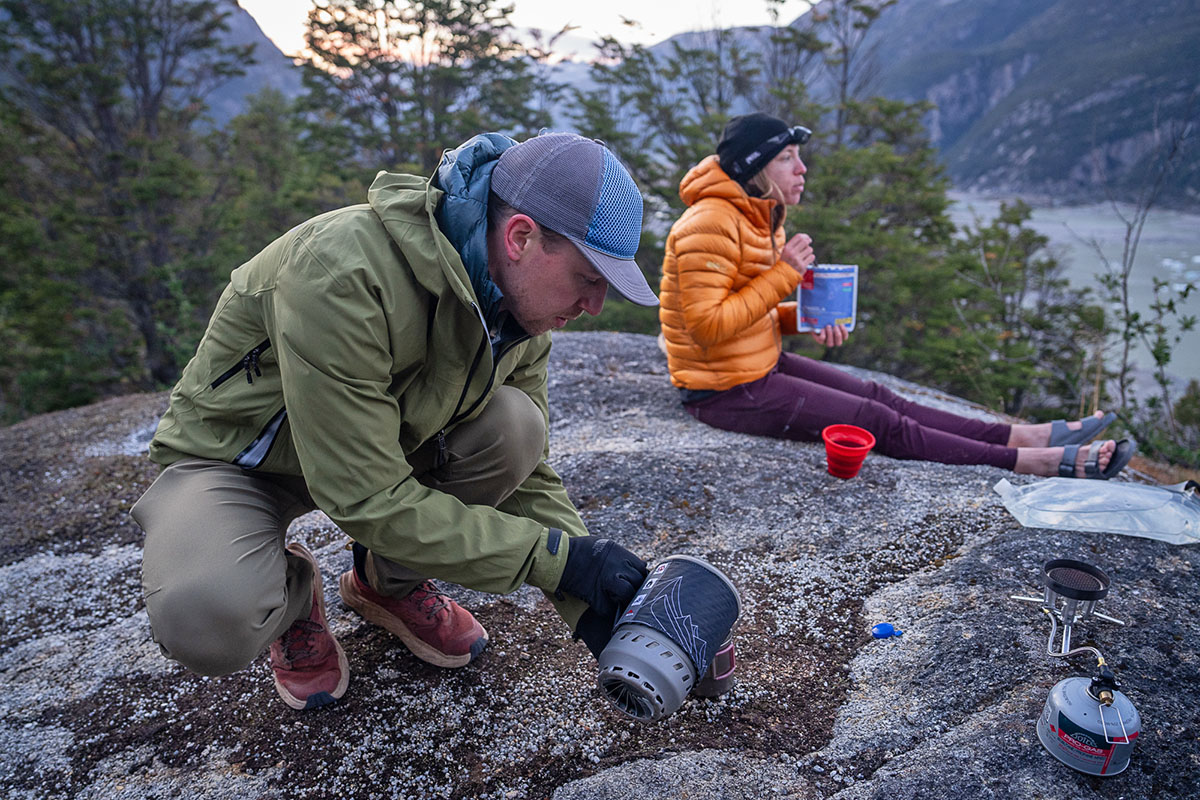
Now that you have an idea what you need in a camping stove, here are our top selections for various categories. For even more details and picks, check out our in-depth article on the best camping stoves.
Best Overall Camping Stove: Camp Chef Everest 2X
Best Budget Camping Stove: Coleman Cascade Classic
Best Compact Camp Stove System: Jetboil Genesis Basecamp System
Best Single-Burner Camping Stove: Coleman Classic 1-Burner Butane
Best Freestanding Stove for Large Groups: Camp Chef Explorer
Best Grill and Griddle Combo: Coleman Cascade 3-in-1
Best Crossover Camping/Backpacking Stove: MSR WindBurner Combo
Back to Our Camping Stove Guide See Our List of the Best Camping Stoves